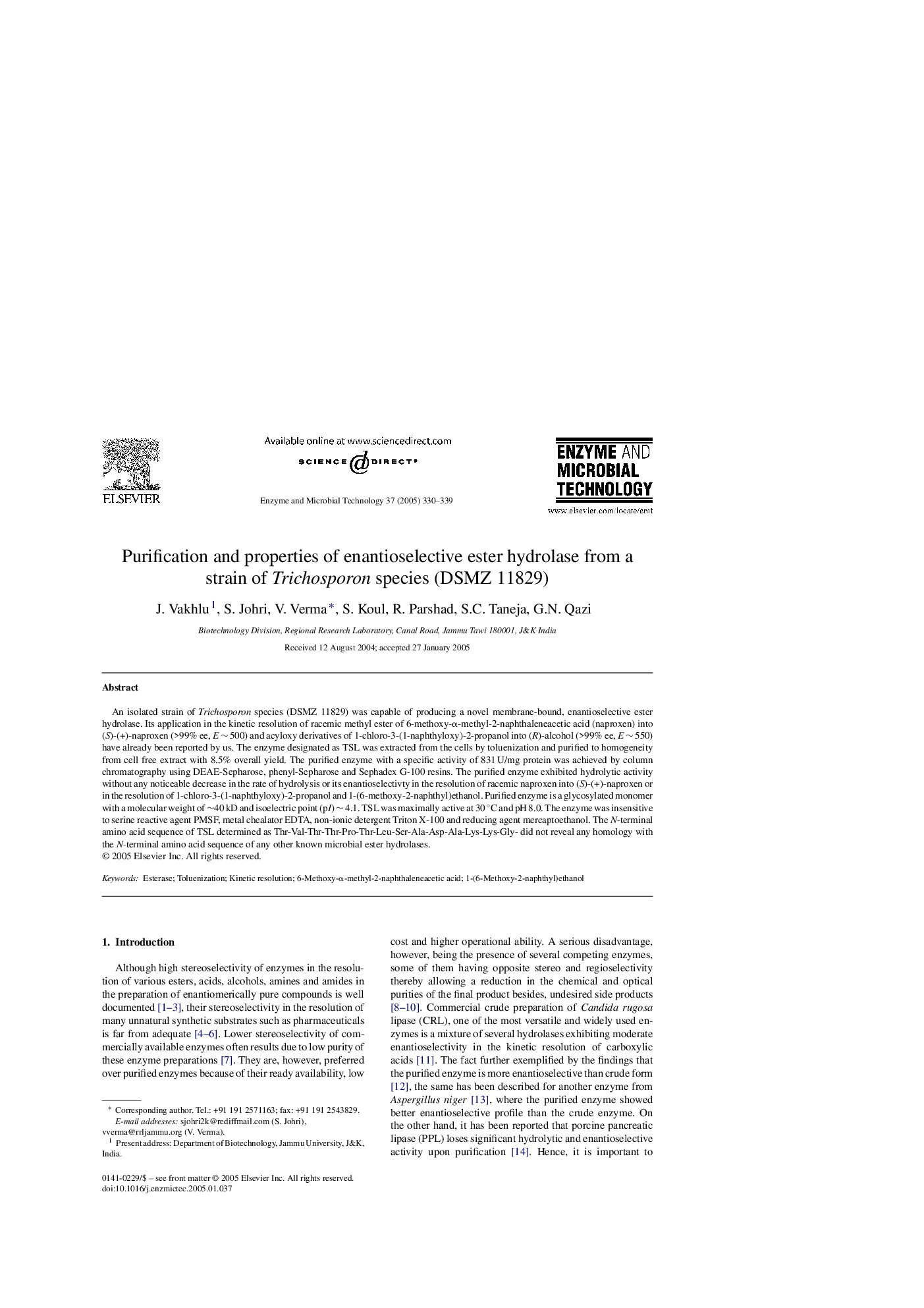| Article ID | Journal | Published Year | Pages | File Type |
|---|---|---|---|---|
| 10233181 | Enzyme and Microbial Technology | 2005 | 10 Pages |
Abstract
An isolated strain of Trichosporon species (DSMZ 11829) was capable of producing a novel membrane-bound, enantioselective ester hydrolase. Its application in the kinetic resolution of racemic methyl ester of 6-methoxy-α-methyl-2-naphthaleneacetic acid (naproxen) into (S)-(+)-naproxen (>99% ee, E â¼Â 500) and acyloxy derivatives of 1-chloro-3-(1-naphthyloxy)-2-propanol into (R)-alcohol (>99% ee, E â¼Â 550) have already been reported by us. The enzyme designated as TSL was extracted from the cells by toluenization and purified to homogeneity from cell free extract with 8.5% overall yield. The purified enzyme with a specific activity of 831 U/mg protein was achieved by column chromatography using DEAE-Sepharose, phenyl-Sepharose and Sephadex G-100 resins. The purified enzyme exhibited hydrolytic activity without any noticeable decrease in the rate of hydrolysis or its enantioselectivty in the resolution of racemic naproxen into (S)-(+)-naproxen or in the resolution of 1-chloro-3-(1-naphthyloxy)-2-propanol and 1-(6-methoxy-2-naphthyl)ethanol. Purified enzyme is a glycosylated monomer with a molecular weight of â¼40 kD and isoelectric point (pI) â¼Â 4.1. TSL was maximally active at 30 °C and pH 8.0. The enzyme was insensitive to serine reactive agent PMSF, metal chealator EDTA, non-ionic detergent Triton X-100 and reducing agent mercaptoethanol. The N-terminal amino acid sequence of TSL determined as Thr-Val-Thr-Thr-Pro-Thr-Leu-Ser-Ala-Asp-Ala-Lys-Lys-Gly- did not reveal any homology with the N-terminal amino acid sequence of any other known microbial ester hydrolases.
Keywords
Related Topics
Physical Sciences and Engineering
Chemical Engineering
Bioengineering
Authors
J. Vakhlu, S. Johri, V. Verma, S. Koul, R. Parshad, S.C. Taneja, G.N. Qazi,
